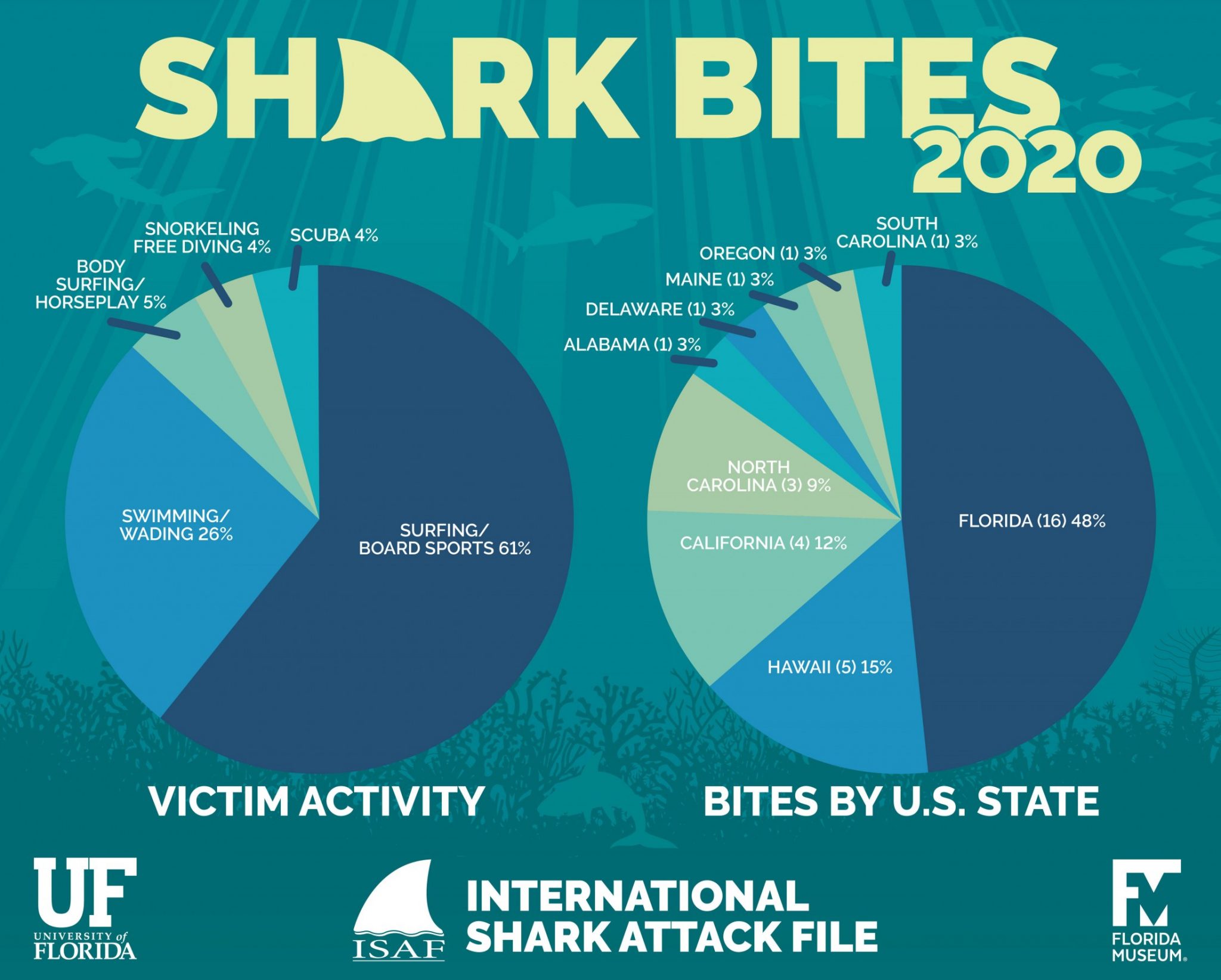Shark Attack Indonesia: The Untold Stories And How To Stay Safe
Shark attacks in Indonesia are a rare but terrifying reality that often captures global attention. The vast archipelago, surrounded by crystal-clear waters and vibrant marine life, is a paradise for beach lovers and divers. But lurking beneath the surface are apex predators that occasionally remind us of their presence. While shark attacks are not common, understanding the risks and learning how to stay safe is crucial for anyone exploring Indonesia's beautiful coastlines.
Indonesia, with its thousands of islands, is a haven for marine enthusiasts. But with great beauty comes a certain level of risk. Shark attacks, though rare, can happen. It's not about fearing the ocean but respecting it. Knowing what to do and what to avoid can make all the difference.
From the famous beaches of Bali to the remote islands of Raja Ampat, the waters around Indonesia are home to diverse shark species. While most sharks are harmless, a few encounters have turned deadly. In this article, we'll dive deep into the world of shark attacks in Indonesia, exploring the facts, figures, and tips to stay safe.
- Shark Attack Indonesia The Untold Stories And How To Stay Safe
- Erin Jobs The Powerhouse Behind Apples Success
Understanding Shark Attack Indonesia
Shark attacks in Indonesia may not happen every day, but when they do, they make headlines. The country's extensive coastline and rich marine biodiversity create the perfect environment for sharks. But why do these attacks occur? Let's break it down:
- Sharks are natural predators, and their behavior is driven by instinct.
- Human activity in shark territories can lead to accidental encounters.
- Environmental factors like water visibility and weather conditions can play a role.
It's important to remember that sharks don't target humans as prey. Most attacks are cases of mistaken identity or curiosity gone wrong. By understanding shark behavior, we can minimize the risks.
Common Shark Species in Indonesia
Indonesian waters are home to over 100 species of sharks. Here are some of the most common ones:
- Monica Bellucci The Iconic Beauty Who Stole Hearts Worldwide
- Miley Cyrus Nude The Truth Behind The Headlines And Sensationalism
- Great White Shark: Rare but occasionally spotted in deeper waters.
- Tiger Shark: Known for its aggressive nature and diverse diet.
- Bull Shark : Found in shallow waters and considered one of the most dangerous species.
- Whale Shark: Gentle giants that pose no threat to humans.
Each species has its own behavior and habitat preferences. Knowing which sharks inhabit certain areas can help you prepare for your next beach adventure.
Shark Attack Statistics in Indonesia
According to the International Shark Attack File (ISAF), Indonesia records an average of 5-10 shark attacks per year. While these numbers may seem alarming, they are relatively low compared to other countries like Australia and the United States.
Here are some key statistics:
- Most attacks occur in shallow waters near popular beaches.
- Bull sharks are responsible for the majority of unprovoked attacks.
- Surfers and swimmers are the most common victims.
It's essential to note that the majority of shark attacks are non-fatal. With proper education and awareness, we can reduce the chances of these incidents happening.
Why Do Shark Attacks Happen?
Shark attacks are often a result of misunderstandings between humans and sharks. Here are some reasons why they occur:
- Sharks mistake humans for prey, especially in low-visibility conditions.
- Humans invade shark territories, increasing the likelihood of encounters.
- Certain activities, like spearfishing, can attract sharks to the area.
By being aware of these factors, we can take steps to avoid potentially dangerous situations.
How to Stay Safe from Shark Attacks in Indonesia
While shark attacks are rare, it's always better to be safe than sorry. Here are some tips to help you enjoy Indonesia's beautiful waters without worrying about shark encounters:
- Stay close to the shore and avoid swimming in deep waters.
- Don't swim during dawn or dusk when sharks are most active.
- Avoid wearing shiny jewelry or bright clothing that may attract sharks.
- Be cautious in areas with schools of fish or seals, as they are common shark prey.
Following these guidelines can significantly reduce your chances of encountering a shark.
What to Do If You Encounter a Shark
Encountering a shark can be scary, but staying calm is crucial. Here's what you should do:
- Slowly and calmly move towards the shore or a safe area.
- Avoid splashing or making sudden movements that may attract the shark.
- If the shark approaches you, try to maintain eye contact and make yourself appear larger.
- In case of an attack, aim for the shark's eyes or gills, as these are sensitive areas.
Remember, most shark encounters end without incident. Trust your instincts and prioritize your safety.
Shark Conservation in Indonesia
Sharks play a vital role in maintaining the health of our oceans. Unfortunately, overfishing and habitat destruction have led to a decline in shark populations worldwide. Indonesia, however, has taken significant steps towards shark conservation.
Here are some initiatives:
- Establishing marine protected areas to safeguard shark habitats.
- Implementing regulations to ban shark finning and promote sustainable fishing practices.
- Raising awareness about the importance of sharks in marine ecosystems.
By supporting these efforts, we can ensure that future generations can enjoy the beauty of Indonesia's marine life.
Why Are Sharks Important?
Sharks are apex predators that help maintain the balance of marine ecosystems. They control populations of other marine species, ensuring that no single species dominates. Without sharks, the ocean's health would suffer, affecting everything from coral reefs to fisheries.
Understanding the role of sharks in our oceans can help us appreciate their importance and work towards their conservation.
Famous Shark Attack Cases in Indonesia
While shark attacks in Indonesia are rare, a few cases have gained significant attention. Here are some of the most notable ones:
- Bali Shark Attack (2017): A surfer was attacked by a tiger shark off the coast of Bali. The incident highlighted the need for better education and awareness among beachgoers.
- Raja Ampat Incident (2019): A diver encountered a great white shark while exploring the waters of Raja Ampat. The shark swam close to the diver but did not attack.
- Lombok Encounter (2020): A group of snorkelers came face-to-face with a bull shark near the Gili Islands. The shark eventually swam away without incident.
These cases serve as reminders of the importance of respecting marine life and understanding its behavior.
Learning from Shark Attack Incidents
Each shark attack incident provides valuable lessons. By studying these cases, we can better understand shark behavior and improve safety measures. For example:
- Many attacks occur in areas with high human activity, highlighting the need for stricter regulations.
- Victims often report that the attacks happened suddenly, emphasizing the importance of vigilance in the water.
- Survivors of shark attacks frequently become advocates for shark conservation, using their experiences to educate others.
Every incident is an opportunity to learn and improve.
The Role of Technology in Shark Safety
Advancements in technology have made it easier to monitor shark activity and improve safety measures. Here are some examples:
- Drone surveillance is used to monitor beaches and alert lifeguards of potential threats.
- Shark detection systems, such as the Clever Buoy, use sonar technology to detect sharks in real-time.
- Mobile apps provide updates on shark sightings and offer safety tips for beachgoers.
By leveraging technology, we can enhance our ability to coexist with sharks safely.
The Future of Shark-Human Interaction
As our understanding of sharks grows, so does our ability to interact with them safely. Future advancements in technology and research will likely lead to better safety measures and conservation efforts. For example:
- Non-lethal shark barriers may become more widespread, protecting both humans and sharks.
- Further studies on shark behavior could help predict and prevent attacks.
- Public awareness campaigns will continue to educate people about the importance of respecting marine life.
The future of shark-human interaction lies in finding a balance between safety and conservation.
Conclusion
Shark attacks in Indonesia, though rare, are a reality that we must acknowledge. By understanding shark behavior, following safety guidelines, and supporting conservation efforts, we can enjoy the beauty of Indonesia's waters without fear. Remember, sharks are not our enemies; they are vital members of our marine ecosystems.
So, the next time you hit the beach or dive into the depths of Indonesia's oceans, keep these tips in mind. Stay safe, respect marine life, and spread the word about the importance of shark conservation. Share this article with your friends and family, and let's work together to ensure a safer and more sustainable future for all.
Table of Contents
- Understanding Shark Attack Indonesia
- Common Shark Species in Indonesia
- Shark Attack Statistics in Indonesia
- How to Stay Safe from Shark Attacks in Indonesia
- What to Do If You Encounter a Shark
- Shark Conservation in Indonesia
- Famous Shark Attack Cases in Indonesia
- Learning from Shark Attack Incidents
- The Role of Technology in Shark Safety
- The Future of Shark-Human Interaction



Detail Author:
- Name : Maximo Huels
- Username : nweissnat
- Email : bianka79@hotmail.com
- Birthdate : 1995-12-07
- Address : 705 Sipes Plaza Apt. 890 West Onie, NE 81106-8303
- Phone : 678-531-4858
- Company : Bergstrom, Rolfson and Conroy
- Job : Occupational Health Safety Technician
- Bio : Rerum repudiandae vitae deserunt sequi explicabo. Consequatur quam qui et cupiditate ipsam natus. Ullam et et sit harum quae consequatur.
Socials
twitter:
- url : https://twitter.com/vito_xx
- username : vito_xx
- bio : Aut deserunt ut aliquam qui sit accusamus voluptatum mollitia. Quaerat odio voluptas praesentium beatae ut est.
- followers : 6583
- following : 2696
facebook:
- url : https://facebook.com/moore1982
- username : moore1982
- bio : Esse libero ut est quam aut dolorem.
- followers : 320
- following : 221